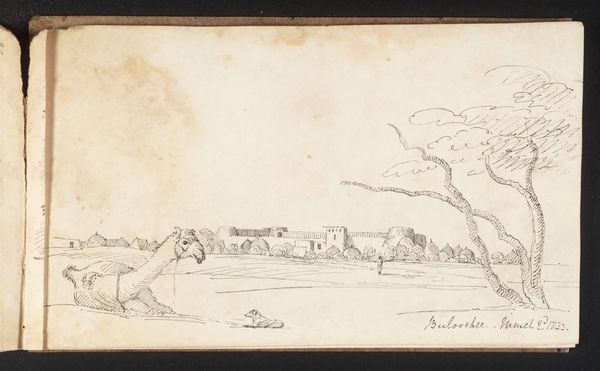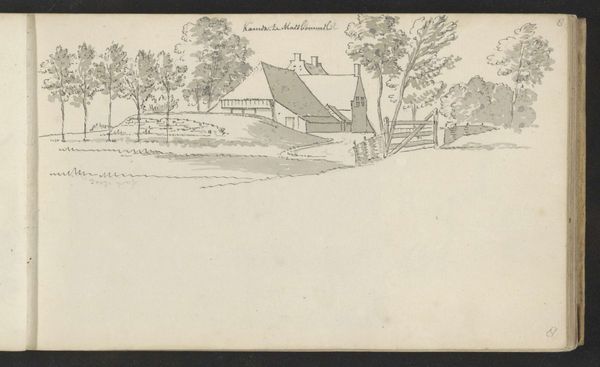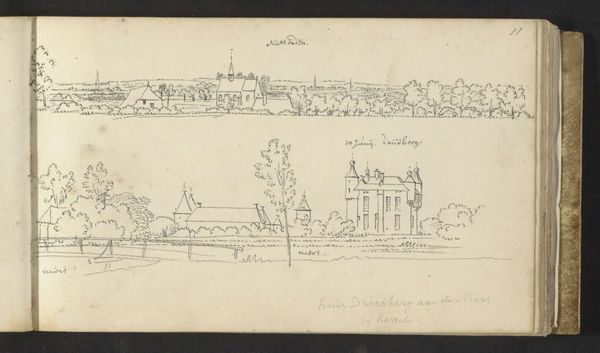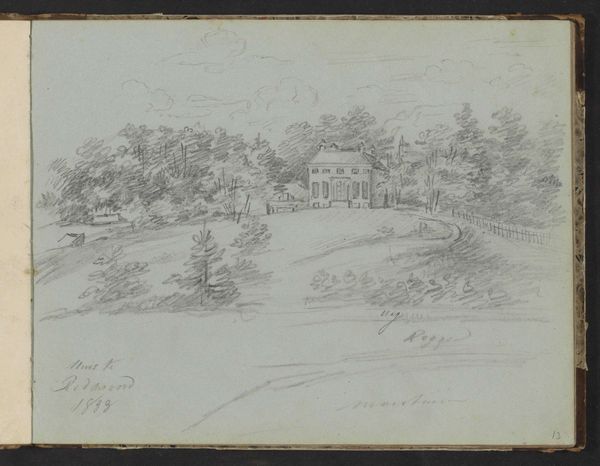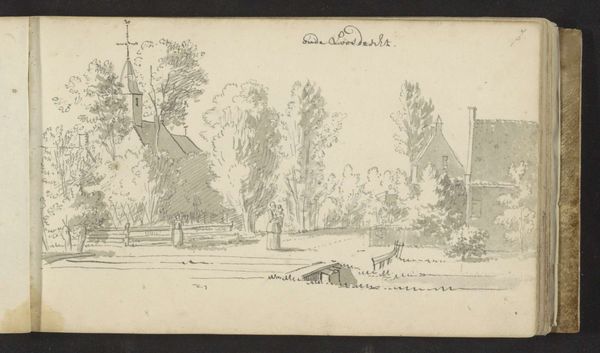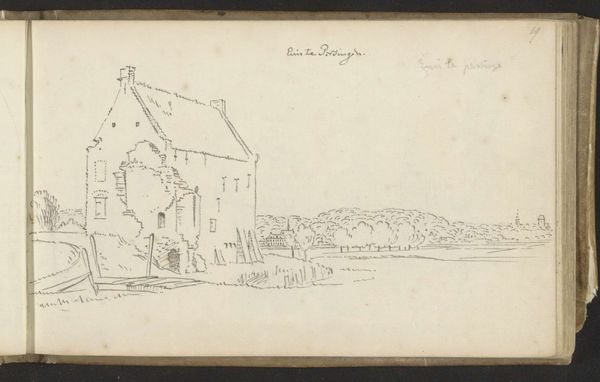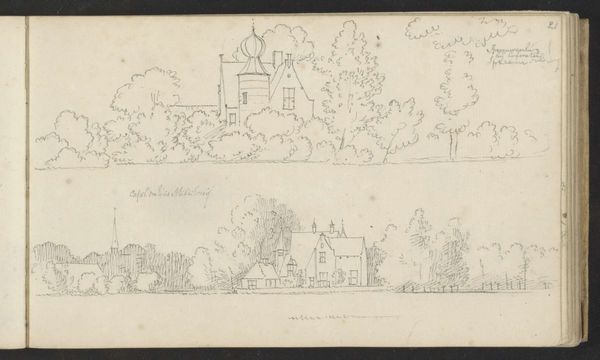
drawing, paper, ink
#
drawing
#
quirky sketch
#
dutch-golden-age
#
pen sketch
#
sketch book
#
landscape
#
paper
#
personal sketchbook
#
ink
#
sketchwork
#
pen-ink sketch
#
pen work
#
sketchbook drawing
#
genre-painting
#
storyboard and sketchbook work
#
sketchbook art
Copyright: Rijks Museum: Open Domain
This is "Klooster te Soest" by Abraham de Haen, made in 1731 using pen and ink. Immediately, one notices how the composition invites a sense of tranquility, despite its stark simplicity. The landscape is rendered with delicate lines, creating a sense of depth and space. Notice how the linear quality of the strokes gives volume to the trees, and the thatched roofs and church in the distance. The drawing, seemingly straightforward, subtly plays with semiotic codes of rural life and religious presence. De Haen employs a strategic placement of form to guide the viewer's eye, creating a harmonious balance between nature and architecture. The horizon line is very low. The form destabilizes our traditional expectations by drawing our attention to the interplay between form and line, creating a contemplative experience.
Comments
No comments
Be the first to comment and join the conversation on the ultimate creative platform.
